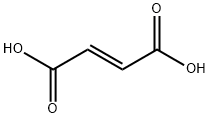Mucochloric acid
Synonym(s):2,3-Dichloromalealdehydic acid
- CAS NO.:87-56-9
- Empirical Formula: C4H2Cl2O3
- Molecular Weight: 168.96
- MDL number: MFCD00135465
- EINECS: 201-752-4
- SAFETY DATA SHEET (SDS)
- Update Date: 2024-12-18 14:15:32

What is Mucochloric acid?
Chemical properties
WHITE TO LIGHT BEIGE CRYSTALLINE POWDER
The Uses of Mucochloric acid
Mucochloric Acid is an intermediate product of the herbicide Burex that can cause poisioning and skin damage upon exposure. Mucochloric Acid is also a chlorine disinfection byproduct in drinking water with mutagenic activity.
Safety Profile
Poison by ingestion. Moderate skin and severe eye irritant. Questionable carcinogen with experimental tumorigenic data. Mutation data reported. When heated to decomposition it emits toxic fumes of Cl-.
Purification Methods
Crystallise the acid twice from water (charcoal). [Beilstein 3 IV 1720.]
Properties of Mucochloric acid
| Melting point: | 125-128 °C(lit.) |
| Boiling point: | 238.75°C (rough estimate) |
| Density | 1.85 |
| refractive index | 1.4730 (estimate) |
| Flash point: | 212 °F |
| storage temp. | Store below +30°C. |
| solubility | 27g/l |
| form | Crystalline Powder |
| pka | 0.28±0.44(Predicted) |
| color | White to light beige |
| PH | 2.4 (27g/l, H2O, 20℃) |
| Water Solubility | SOLUBLE IN HOT WATER |
| Merck | 14,6297 |
| BRN | 1705641 |
| CAS DataBase Reference | 87-56-9(CAS DataBase Reference) |
| NIST Chemistry Reference | Mucochloric acid(87-56-9) |
| EPA Substance Registry System | 2-Butenoic acid, 2,3-dichloro-4-oxo-, (2Z)- (87-56-9) |
Safety information for Mucochloric acid
| Signal word | Danger |
| Pictogram(s) |
 Corrosion Corrosives GHS05  Skull and Crossbones Acute Toxicity GHS06 |
| GHS Hazard Statements |
H301:Acute toxicity,oral H314:Skin corrosion/irritation H335:Specific target organ toxicity, single exposure;Respiratory tract irritation |
| Precautionary Statement Codes |
P260:Do not breathe dust/fume/gas/mist/vapours/spray. P270:Do not eat, drink or smoke when using this product. P280:Wear protective gloves/protective clothing/eye protection/face protection. P303+P361+P353:IF ON SKIN (or hair): Remove/Take off Immediately all contaminated clothing. Rinse SKIN with water/shower. P305+P351+P338:IF IN EYES: Rinse cautiously with water for several minutes. Remove contact lenses, if present and easy to do. Continuerinsing. |
Computed Descriptors for Mucochloric acid
Mucochloric acid manufacturer
Noble Molecular Research
1Y
Phone:+91-9717706044
Whatsapp: +91 9717706044
product: 87-56-9 / 766-40-5 Mucochloric acid 99%
New Products
Tert-butyl bis(2-chloroethyl)carbamate 4-Methylphenylacetic acid N-Boc-D-alaninol N-BOC-D/L-ALANINOL N-octanoyl benzotriazole 3-Morpholino-1-(4-nitrophenyl)-5,6-dihydropyridin- 2(1H)-one Furan-2,5-Dicarboxylic Acid DIETHYL AMINOMALONATE HYDROCHLORIDE 1,1’-CARBONYLDIIMIDAZOLE R-2-BENZYLOXY PROPIONIC ACID 1,1’-CARBONYLDI (1,2-4 TRIAZOLE) N-METHYL INDAZOLE-3-CARBOXYLIC ACID (2-Hydroxyphenyl)acetonitrile 4-Bromopyrazole 5-BROMO-2CYANO PYRIDINE 5,6-Dimethoxyindanone 5-broMo-2-chloro-N-cyclopentylpyriMidin-4-aMine 2-(Cyanocyclohexyl)acetic acid 4-methoxy-3,5-dinitropyridine 1-(4-(aminomethyl)benzyl)urea hydrochloride 2-aminopropyl benzoate hydrochloride diethyl 2-(2-((tertbutoxycarbonyl)amino) ethyl)malonate tert-butyl 4- (ureidomethyl)benzylcarbamate Ethyl-2-chloro((4-methoxyphenyl)hydrazono)acetateRelated products of tetrahydrofuran








You may like
-
 87-56-9 / 766-40-5 Mucochloric acid 99%View Details
87-56-9 / 766-40-5 Mucochloric acid 99%View Details
87-56-9 / 766-40-5 -
 Mucochloric Acid CAS 87-56-9View Details
Mucochloric Acid CAS 87-56-9View Details
87-56-9 -
 Mucochloric acid CAS 87-56-9View Details
Mucochloric acid CAS 87-56-9View Details
87-56-9 -
 1975-50-4 98%View Details
1975-50-4 98%View Details
1975-50-4 -
 2-HYDROXY BENZYL ALCOHOL 98%View Details
2-HYDROXY BENZYL ALCOHOL 98%View Details
90-01-7 -
 14714-50-2 (2-Hydroxyphenyl)acetonitrile 98+View Details
14714-50-2 (2-Hydroxyphenyl)acetonitrile 98+View Details
14714-50-2 -
 118753-70-1 98+View Details
118753-70-1 98+View Details
118753-70-1 -
 733039-20-8 5-broMo-2-chloro-N-cyclopentylpyriMidin-4-aMine 98+View Details
733039-20-8 5-broMo-2-chloro-N-cyclopentylpyriMidin-4-aMine 98+View Details
733039-20-8
Statement: All products displayed on this website are only used for non medical purposes such as industrial applications or scientific research, and cannot be used for clinical diagnosis or treatment of humans or animals. They are not medicinal or edible.